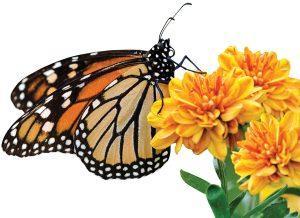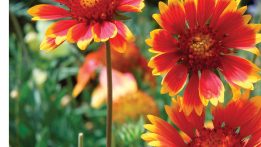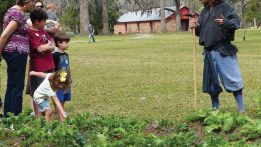 Why should you “bee” concerned? Put simply, we should be concerned because we all must eat. In order to do so, pollinators are a requirement for most plants to propagate. These plants are not only those grown for food, but also for medications and other necessary natural products that we use in our everyday life. There are over one thousand essential plants worldwide that require pollination, and as our pollinators decline, our way of life diminishes as well. To better understand the integral role that pollinators play, here are some key facts you should know:
Why should you “bee” concerned? Put simply, we should be concerned because we all must eat. In order to do so, pollinators are a requirement for most plants to propagate. These plants are not only those grown for food, but also for medications and other necessary natural products that we use in our everyday life. There are over one thousand essential plants worldwide that require pollination, and as our pollinators decline, our way of life diminishes as well. To better understand the integral role that pollinators play, here are some key facts you should know:
- Bees pollinate nearly ⅓ of the food we eat.
- 87 of our 124 main food crops depend on pollinators.
- 75% of all flowering plants require insect or animal pollination.
- Over 1000 essential plants, including those grown for food, beverages, spices, and medicines, require pollinators.
- Nine common creatures are considered pollinators: birds, bats, butterflies, moths, flies, beetles, wasps, small mammals and bees.
The Bee
 Colony collapse disorder is a phenomenon that occurs when the majority of worker bees abandon a colony. They leave behind only the queen and nurse bees to take care of the remaining immature bees. This disorder leaves us with a decline in the honey bee population.
Colony collapse disorder is a phenomenon that occurs when the majority of worker bees abandon a colony. They leave behind only the queen and nurse bees to take care of the remaining immature bees. This disorder leaves us with a decline in the honey bee population.
It is crucial to not overlook other ‘native’ bees that can be found behind the scenes performing important tasks. They are much more efficient pollinators than honey bees and are essential to a healthy ecosystem. The 4,000 species of native bees found in North America pollinate many trees, including ones that make up forests, stabilize the soil, and provide shelter for birds and other wildlife. Additionally, they pollinate wildflowers and plants that sustain our wildlife and are proficient at pollinating many of our food crops. It is estimated that native bees provide three billion dollars of pollinator services to agriculture annually. Unfortunately, bees and other pollinators face many challenges that have contributed to their decline including habitat loss, disease, parasites and other environmental contaminants.
Seventy percent of all bees are ground nesting, such as mining and digger bees, with the remainder being mostly wood nesting bees, like the orchard mason and leafcutter bees, which can be found in the genus Osmia. Unlike honey bees and bumblebees, Osmia bees are solitary and very gentle. Every female is fertile and makes her own nest; she has no worker bees and produces no honey. They emerge from their cocoons in the spring and are actively pollinating during spring and summer months. All of these qualities make them the perfect pollinators for our home gardens. By providing bee houses, we can attract them to our gardens and help increase their numbers.
The Butterfly
 The monarch, “King of Butterflies” is another one of our natural pollinators and a threatened treasure. Estimates indicate that the North American monarch population has decreased in recent years from 1 billion in 1996 to just 35 million today.
The monarch, “King of Butterflies” is another one of our natural pollinators and a threatened treasure. Estimates indicate that the North American monarch population has decreased in recent years from 1 billion in 1996 to just 35 million today.
Monarchs only need a few things to flourish – milkweed, nectar, shelter, and water – but these resources are slowly diminishing. During the breeding season, monarchs require milkweed plants to rear their larvae, and nectar sources to sustain themselves during reproduction and to fuel their migration. Over the winter, monarchs require shelter and water, but unfortunately, deforestation has eliminated many colony sites. In the United States alone, 6000 acres a day are converted to development, eliminating necessary milkweeds and nectar sources. Chemically intensive agriculture and roadside management, caused by excessive mowing and the use of herbicides, have also eliminated monarchs and their milkweed hosts. Lower numbers of monarchs in this decade may be related, at least in part, to habitat loss.
The Initiative
Tallahassee Garden Club has taken their lead from the National Garden Club. They are involved in linking organizations together to improve the plight of bees and other pollinators in our country through four initiatives: BeeGAP (Bee Gardeners Adding Pollinators), Monarch Watch Committee, Bee a Wildlife Action Hero! and Million Pollinator Garden Challenge. Each initiative has contributed to the overall welfare of bees, monarchs, and other pollinators by educating the general public on ways in which they can do their part and by challenging us to increase community awareness about these fascinating pollinators.
“Bee” Involved
- Increase native bee habitats by erecting bee houses on your property.
- Use pollinator-friendly plants in your landscape. Plant native flowering plants, such as perennials, which are richer nectar sources than annuals.
- Avoid pesticides and herbicides.
- Provide plants that will bloom from early spring to late fall with a diversity of flower shapes and sizes that will accommodate all species of native bees.
- Join with the Tallahassee Garden Club, the Florida Federation of Garden Clubs and the National Garden Club, Inc. to educate others and help restore the habitat of native bees and other pollinators.
- Help the monarchs by planting native milkweed. Non-natives, exotic or tropical milkweed may be contributing to the decline of monarchs. Ask your local garden center for untreated, native plants such as “butterfly”, “swamp”, “purple”, or “whorled milkweeds”.
For more information about how you can help, check out www.tallahasseegardenclub.com and join our garden club. ![]()
By Phyllis West
Bees, Birds, and Butterfly Chairman
Tallahassee Garden Club, Inc.




